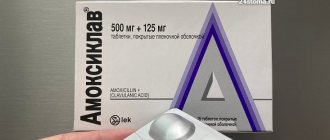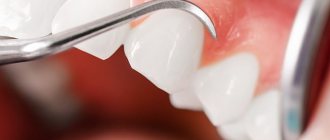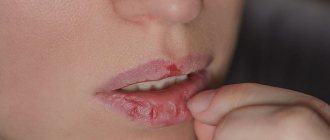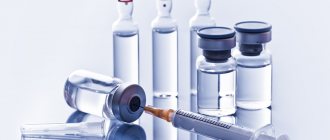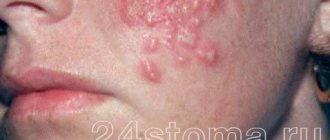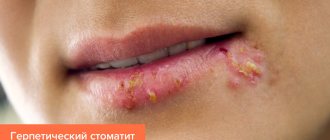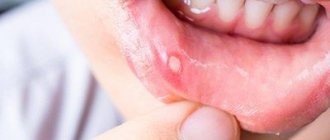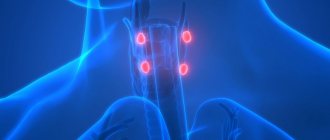Hemostatic (antihemorrhagic, hemostatic) drugs are a group of drugs that are used to stop bleeding (hemorrhages) and prevent excessive blood loss.
Normally, blood is a fluid liquid - a suspension of formed elements (erythrocytes, leukocytes, platelets) in plasma. However, during bleeding, blood is able to change its rheological (fluid) properties - it becomes excessively thick and viscous, and then solidifies at the site of damage to the vessel wall (coagulates), forming a clot (thrombus). The thrombus closes the lumen of the wound and thereby prevents further bleeding and loss of blood from the body.
In case of extensive bleeding or in diseases that are accompanied by a violation of the formation of blood clots, the blood does not have time or is not able to clot in time. This leads to excessive blood loss, and then to shock, oxygen starvation of organs (especially the brain and heart) and the development of various kinds of negative consequences, including death. In this case, hemostatic drugs are used.
Indications for use
Hemostatic drugs are used for conditions associated with blood clotting disorders and bleeding.
Fibrinolysis inhibitors are used to stop severe bleeding during operations (especially on the heart, lungs, large vessels), extensive injuries, birth hemorrhages, reduced blood clotting in liver diseases, as well as in case of overdose of fibrinolytic drugs (fibrinolysin, streptokinase, alteplase, urokinase, tenecteplase and etc.).
Aprotinin is additionally used for diseases of the pancreas: acute pancreatitis (including alcoholic), severe injuries and pancreatic cancer.
Vitamin K preparations are used for bleeding associated with vitamin K deficiency in the body: hemorrhagic syndrome of newborns, liver diseases (cholelithiasis and obstructive jaundice) and intestinal diseases (enterocolitis, Crohn's disease). In addition, vitamin K preparations are used for bleeding caused by an overdose of indirect anticoagulants - warfarin, acenocoumarol, phenindione.
Herbal hemostatics are indicated for uterine bleeding (menorrhagia), minor bleeding from small vessels of the stomach and intestines.
Hemostatic drugs for local use are used to stop capillary and parenchymal bleeding (from internal organs) during open abdominal operations.
Etamsylate is used for the prevention and treatment of surgical bleeding, as well as for uterine, nosebleeds, bleeding gums due to periodontal disease, and gingivitis.
Eltrombopag and recombinant thrombopoietin are indicated for the treatment of idiopathic thrombocytopenic purpura - a chronically low level of platelets in the blood, which is dangerous due to frequent bleeding - when the spleen is removed.
Emicizumab is used to treat hemophilia, an inherited disease associated with blood clotting disorders and life-threatening bleeding.
Clotting factor drugs are used for severe, extensive bleeding, as well as for the treatment of hemophilia.
Resorptive hemostatic agents
Specific
K. s. resorptive action are some drugs obtained from blood (see Blood, table “Characteristics of basic blood products”), which are purified concentrates of individual (or sums) of blood coagulation factors. These drugs include: fibrinogen (see), prothrombin complex (contains the sum of factors II, VII, IX and X), antihemophilic globulin (contains factor VIII) and factor XIII concentrate. These drugs are effective for bleeding associated with congenital or secondary deficiency of individual blood coagulation factors. So, for example, fibrinogen is used for hereditary afibrinogenemia, for hypo- and afibrinogenemia due to increased fibrinolysis, for secondary fibrinogen deficiency arising from liver diseases, pernicious anemia, myeloid leukemia, etc. Prothrombin complex is used for hemophilia A (see Hemophilia) and bleeding due to secondary insufficiency of the relevant blood coagulation factors (for example, with liver diseases, overdose of indirect anticoagulants, etc.). Antihemophilic globulin is used by Ch. arr. for the purpose of preventing and stopping bleeding in patients with hemophilia. Factor XIII concentrate is effective mainly in hemorrhagic syndrome caused by congenital deficiency of this factor, as well as in hemorrhagic conditions resulting from secondary deficiency in liver diseases and acute leukemia.
Thus, concentrates of blood coagulation factors should be considered primarily as replacement therapy for hereditary or secondary deficiency of these factors. It is advisable to treat this kind of blood coagulation disorders with drugs of this group based on determining the level of specific hemostasis factors. Instead of drugs in this group, for these conditions, you can use whole blood, as well as fresh frozen blood plasma or blood plasma prepared at low temperatures.
In addition to concentrates of blood coagulation factors, as specific K. For resorptive action, fibrinolysis inhibitors (antifibrinolytics) are used, which have the ability to reduce the fibrinolytic activity of the blood. In this regard, they have a hemostatic effect. arr. for bleeding associated with an increase in fibrinolytic activity of the blood, for example, during operations on organs (prostate, lungs, heart, etc.) containing fibrinolysis activators, with the so-called. secondary hyperfibrinolysis (for example, with cirrhosis of the liver, fat embolism, septic conditions, etc.), as well as with bleeding that occurs during treatment with fibrinolytic agents (fibrin lysine, etc.).
According to the sources of production, antifibrinolytic drugs are divided into natural (biological) - iniprol, contrical, trasylol (see), and synthetic - aminocaproic acid (see), Ambien. Natural antifibrinolytics are obtained from animal raw materials (iniprol - from the pancreas, contrical - from lung tissue, and trasylol - from the parotid glands of cattle). They are polypeptides with a mol. weighing approx. 6500-12,000 and have antienzyme activity against various proteases - plasmin, trypsin, chymotrypsin and kallikrein. The mechanism of the antifibrinolytic action of these drugs comes down to competitive (in stoichiometric ratios) inhibition of plasmin and non-competitive inhibition of the process of its activation. It is possible that these drugs may also have an antithromboplastic effect.
Synthetic antifibrinolytics, unlike natural ones, inhibit hl. arr. activators of plasminogen (profibrinolysin) and exhibit some antiplasmin activity.
Antifibrinolytics should be used only after clarifying the cause of bleeding and under the control of fibrinolytic activity of the blood and the content of fibrinogen in it.
How specific K. s. For resorptive action, drugs that are antagonists of anticoagulants can be considered. To this group K. s. include: heparin antagonist protamine sulfate (see), calcium preparations - calcium chloride and calcium gluconate (see Calcium, preparations), which are antagonists of sodium citrate, as well as antagonists of indirect anticoagulants - vitamin K (see Phylloquinones) and its substitutes , for example, vikasol (see) and konakion.
The principles of action of these drugs are different. For example, protamine sulfate inactivates heparin, forming strong complexes with it.
When calcium preparations interact with citrate, difficult-to-dissociate calcium citrate is formed, which leads to the loss of the citrate's anticoagulant effect. At the same time, based on the idea that Ca2+ ions are one of the components (factor IV) of the natural hemostasis system, calcium preparations are often used for bleeding of various origins (uterine, nasal, pulmonary, etc.). However, the process of converting prothrombin into thrombin requires very small amounts of Ca2+ ions, which are usually found in the blood. In this regard, the use of calcium preparations as C. may be considered appropriate only in cases where the hypocoagulable state is caused by transfusion of citrated blood or plasma.
In case of overdose of indirect anticoagulants, as well as in case of hypocoagulation associated with vitamin K deficiency, its substitutes are used - vikasol and konakion. It should, however, be borne in mind that in some cases Vicasol is not an adequate substitute for vitamin K.
To the group of nonspecific
Resorptive hemostatic agents include drugs that do not have a direct effect on the factors of the blood coagulation system. To this group K. s. include, for example, thromboplastic substances, i.e. substances that promote thrombus formation. Preparations that are solutions of pectins, for example, have such properties. hemophobin (see). Hemophobin is effective for hemorrhagic conditions of various origins (for example, allergic and drug-induced hemorrhages, uterine bleeding, etc.).
How nonspecific K. s. substances that reduce capillary permeability are also used for resorptive action, for example, adroxon (see), serotonin (see), and drugs with P-vitamin activity - rutin, etc. (see Bioflavonoids). However, the effectiveness of these drugs in hemorrhagic conditions is very low.
A special type of nonspecific K. s. Resorptive action is represented by drugs that reduce vascular permeability and stimulate the hemostatic functions of platelets, for example, etamsylate (dicinone).
For hemorrhagic diathesis of thrombocytopenic origin, glucocorticoid preparations (eg, prednisone, prednisolone) in low doses are effective. However, transfusions of whole blood and platelet concentrates are most effective for thrombocytopenia (especially in hemorrhagic shock) and thrombocytopathies (see Platelet mass).
For uterine bleeding as nonspecific K. s. For resorptive action, hormonal preparations with gestagenic and estrogenic activity, androgenic hormonal preparations, as well as uterine preparations (see) are used - ergot preparations (see), cotarnine (see), etc.
As a K. s. Resorptive action to stop bleeding of various origins is sometimes used by preparations of Lagochilus intoxicating, nettle, yarrow, water pepper and some other medicinal plants (see). However, it is difficult to judge the hemostatic properties of these drugs, since information about them is based, as a rule, on insufficient and uncontrolled assessment of effectiveness.
Classification of hemostatic drugs
Hemostatic drugs are classified into:
- fibrinolysis inhibitors: amino acids (tranexamic acid, aminocaproic acid), protease inhibitors (aprotinin);
- vitamin K preparations: menadione, phytomenadione;
- herbal preparations: liquid extract of water pepper, nettle leaves, yarrow herb;
- hemostatic agents for local use: thrombin, fibrinogen, Ambien, calcium chloride;
- other hemostatic drugs for systemic use: etamsylate, eltrombopag, emicizumab, recombinant thrombopoietin.
In addition, preparations of proteins that regulate blood coagulation - coagulation factors II, VII, VIIa, VIII, IX, X and their combinations, von Willebrand factor, nonacog alpha - have a hemostatic effect.
Local hemostatic agents
Local hemostatic agents, by analogy with resorptive drugs, are divided into specific and nonspecific.
To specific
K. s. Local action includes some substances that are components of the blood coagulation system and have a direct effect on the process of thrombus formation, for example. thrombin (see), thromboplastin, as well as combined drugs - hemostatic sponge (see Fibrin sponge, film), antiseptic biological suppositories, the active principles of which are these substances.
Nonspecific
K. s. local action - gelatin sponge (see Gelatin), oxycel, hemostatic collagen sponge - promote thrombus formation due to the formation of mechanical matrices that facilitate the formation of blood clots.
In addition, there are combined preparations (for example, a biological antiseptic tampon), which include both specific and nonspecific K. s. local action.
Local hemostatic agents are used for local use, ch. arr. with capillary and parenchymal bleeding.
Clinical and pharmacological characteristics of the main K. pages - see table.
Publications on the problem of local bleeding in the work of dentists in outpatient clinics and clinics were analyzed. There has been a significant increase in the number of research data over the past 30 years. The relevance of the problem for solving the issues of duration of treatment, reducing the morbidity of dental procedures, introducing new medical technologies, increasing the quality and accessibility of dental services is reflected.
Modern dentistry is one of the actively developing areas of medical activity, which is associated both with the growing demand of the population for this type of service, and with the introduction of modern equipment, new technological techniques, improvement of drug supply for the treatment process, and increased availability of dental services. At the same time, special attention is paid to the completeness of the provision of specialized dental care in outpatient settings, which, in turn, presupposes the adaptation of the most advanced treatment and diagnostic technologies to these conditions, as well as the sufficiency of the pharmacotherapeutic effect of the drugs used.
One of the leading and historically oldest problems in dentistry, as well as medicine in general, is the problem of stopping bleeding. It is equally important in the work of dentists of all specialties - therapists, surgeons, orthopedists, orthodontists, periodontists. In outpatient work, the dentist solves the problem of stopping superficial (capillary, mixed, external, primary, mechanical) bleeding in almost every second patient.
Bleeding is classified by source (arterial, venous, capillary, mixed), direction (internal, external), time of occurrence (primary - at the time of injury, secondary - some time after injury), mechanism of occurrence (mechanical, neurotrophic) [2]. A person has his own protective-adaptive mechanisms aimed at preventing (minimizing) blood loss - hemostasis. The hemostatic system is a highly organized biological system of the body. The separation of hemostasiology into a separate branch of medical knowledge is due to its very important role [8].
The coagulological blood system is a complex multicomponent biocybernetic complex that ensures the preservation of the integrity of the human body by constantly maintaining the liquid state of the blood, the formation of targeted thrombosis according to the demand principle, and the activation of reparative processes in places of vascular and tissue damage [4, 5, 7] . The functioning of the hemostatic system largely determines the efficiency of blood supply to tissues, the prevention and relief of hemorrhages, thrombosis, ischemia, and organ infarctions, and the protection of the body from the dissemination of bacteria, toxins, and proteolysis products from the lesion [10].
In the work of dentists, issues of stopping bleeding affect the complexity and duration of any procedure, affect the view within an already small surgical field, sometimes jeopardize the very possibility of performing a dental procedure, and can lead to postoperative complications: secondary bleeding, inflammatory processes, depressurization of restorations and orthopedic structures. Bleeding prolongs treatment time, leads to additional suffering for the patient, increases labor costs and, of course, affects the economic efficiency of specialists.
Various treatment methods have historically been used to stop bleeding, ranging from dressings and cauterization to vessel ligation and the use of a variety of local and systemic hemostatic agents [2].
At the prehospital stage, systemic hemostatic agents are used very rarely - according to indications, since they are administered mainly parenterally and have significant drawbacks. In addition, the use of systemic hemostatic agents in a clinic setting is an expensive procedure due not only to their high price, but also to the need for careful laboratory monitoring.
In clinical practice, traditional methods of local hemostasis include: mechanical - tamponade, ligation or suturing of a bleeding vessel, suturing a damaged organ; physical - hot solution of 0.9% sodium chloride, electrocoagulation, local hypothermia, laser, plasma scalpel; chemical - cyanoacrylate adhesives, modified cellulose, collagen, gelatin, etc.; biological - suturing organs and tissues to the bleeding surface, applying extracts and emulsions from organs and tissues [2]. The most common currently is the gradation of local hemostasis techniques into mechanical, thermal and chemical. More often, including dentists, they use chemical methods.
The problem of bleeding control occurs at all stages of dental care: preoperative assessment and identification of risk factors for bleeding, intraoperative (perioperative) bleeding control and management of postoperative bleeding [31].
Most authors attach great importance to the preoperative stage, which includes primary prevention measures. They begin with planning care for each individual patient. Knowledge of the basic principles of planning allows the doctor to choose the optimal treatment methods, makes it possible to determine priorities in the provision of each type of care and the volume of necessary procedures [1]. In well-equipped dental institutions, computer planning is used to resolve issues of individual labor-intensive dental interventions [13].
In the preoperative prevention of bleeding, a detailed medical history, information about general somatic status, and identification of risk factors come to the fore [6].
Anamnesis regarding previous injuries and surgical interventions is very important. They themselves can represent no less important test of the state of the hemostatic system than laboratory tests [26]. Previously, it was generally accepted that blood clotting in women during menstruation decreases, so invasive dental procedures were not recommended during this period. Research in recent years has shown that bleeding that occurs after tooth extraction during menstruation is more often associated with local causes [23].
When planning a dental service where there is a possibility of local bleeding, the age of the patients should also be a concern. Older people may be considered at risk because they often experience changes in the physical properties of the blood and there is ignorance or underestimation of the role of the medications they take [30]. A tendency to bleeding is observed in persons suffering from hypertension, other diseases of the cardiovascular system, and liver. When collecting anamnesis, special attention should be paid to identifying diseases characterized by impaired blood clotting or damage to the vascular system. It is necessary to clarify the medications that the patient is taking: indirect anticoagulants that suppress the function of prothrombin formation by the liver (neodicoumarin, phenylin, syncumar), and direct anticoagulants - heparin. The possibility of developing primary bleeding can also be affected by other drugs - acetylsalicylic acid and a large number of modern drugs that contain it, as well as paracetamol, nitroglycerin, diuretics, digitalis, antibiotics, sulfonamides, antimalarials, hypnotics, antiepileptic and psychotropic substances , analgesics, etc. [23, 26].
Thus, the above analysis of literature data shows that at all stages of the dental treatment and preventive activities in outpatient clinics and clinics, an integrated approach to the prevention and treatment of post-traumatic bleeding should be implemented, which will help solve this complex problem and thereby guarantee the quality of care.
REFERENCES 1. Aleksandrova L. L., Pustovoitova N. N., Yurchuk E. N. Treatment planning in therapeutic dentistry: Educational method. manual.—Minsk, 2008. 2. Ball S.V. // Directory of general practitioners. - 2009. - No. 6. - P. 71-77. 3. Bailey D. X., Fisher D. E. // Clinical. dentistry.— 2004.— No. 2.— P. 34—42. 4. Vasiliev S.A. Vorobyov A.I., Gorodetsky V.M. // MateriaMedia. - 1997. - No. 1. - P. 23-36. 5. Vorobyov P. A. Current hemostasis. - M., 2004. 6. Grokholsky A. P. Medical errors in dentistry. - Kyiv, 1994. 7. Tsarev V. P. Hematological syndromes in dentistry: Educational method. manual. - Minsk, 2010. 8. Kamyshnikov V. S. Hemostasiology in clinical and laboratory practice: Textbook. manual for students of the postgraduate system. honey. education.—Minsk, 2011. 9. Zilber A.P. Clinical physiology in anesthesiology and resuscitation. - M., 1984. 10. Zubovskaya, E. T., Svetlitskaya S. G. Hemostasis system. Theoretical foundations and research methods: Practical. manual. - Minsk, 2010. 11. Shebeko L. V. // Organization, prevention, new technologies and rehabilitation in dentistry: Materials of the IV Congress of Dentists of Belarus. - Vitebsk, 2000. - P. 432-434. 12. Kazeko L. A. // Health. Belarus. - 1993. - No. 2. - P. 30-32. 13. Stachulla S. // New in dentistry. - 2012. - No. S. - pp. 14-26. 14. Maltseva M.V. Correction of the mucous membrane of the gingival margin when filling teeth: Abstract of thesis. dis. ...cand. honey. Sciences. - M., 1999. 15. Zeytagov O. G. // Dentistry for everyone. - 1999. - No. 2/3. - P. 28-29. 16. Petrikas A. Zh., Zakharova E. L. // Dentistry. - 2004. - No. 2. - P. 17-18. 17. Ushakov A.I. // Dentistry. - 2012. - Volume 91, No. 1. - P. 48-53. 18. Polozova O. A. Retraction and correction of the gingival margin during dental restoration: Abstract of thesis. dis. ...cand. honey. Sciences.— Tver, 2006. 19. Poloneichik N. M. // Sovrem. dentistry.— 2003.— No. 2.— P. 10—13. 20. Ryakhovsky A. N., Muradov M. A. // Maestro of Dentistry. - 2003. - No. 2. - P. 4-7. 21. Gudkova E.I. // Bel. honey. journal - 200S. - No. 2. - P. 33-35. 22. Dentistry: Textbook / Ed. T. G. Robustova. - M., 2008. 23. Timofeev A. A. Maxillofacial surgery: A textbook for students of higher medical education. textbook institutions.— Kyiv, 2010. 24. Ushakov R.V., Tsarev V.N. // Ros. dentist journal - 2003. - No. 6. - P. 40-44. 25. Ushakov R.V., Tsarev V.N., Chuvilkin V.I. // Dentistry for everyone. - 1999. - No. 1. - P. 24-27. 26. Fermilen J., Ferstate M. Hemostasis. - M., 1984. 27. Filipchuk D. G., Yadchenko V. N., Timashkova L. I. // Organization, prevention, new technologies and rehabilitation in dentistry: Materials IV Congress of Dentists of Belarus. - Vitebsk, 2000. - P. 143-145. 28. Chistyakova G. G., Lazareva I. S. // Dentistry. journal - 2007. - No. 4. - P. 321-323. 29. Osborn T. R. // J. Oral. Maxillofac. Surg.—1985.—Vol. 43, No. 10.— R. 767-769. 30. Canigral A. // Med. Oral. Patol. Oral. Cir. Bucal.—2010.—Vol. 15, No. 6.— P. 863—868. 31. Kamoh A., Swantek J. // Dent. Clin. North. Am.—2012.—Vol. 56, No. 1.— P. 17—23. 32. McBee WL, Koerner KR // Dent. Today.—200S.—Vol. 24, No. 3.— P. 62—65. 33. Goldman D. R // Oral. Surg. Oral. Med. Oral. Pathol.—1973.—Vol. 35, No. 4.— P. 472—474. 34. Julius LL // J. Oral. Maxillofac. Surg.—1982.—Vol. 40, No. S.—P. 285—286. 35. Pribitkin ED, Boger G. // Arch. Facial. Plast. Surg.—2001.—Vol. 3, No. 2.— P. 127—132. 36. Spolarich AE, Andrews L. // J. Dent. Hyg.—2007.—Vol. 81, No. 3.—P. 67.
Received 12/23/13.
Address for correspondence: Tagieva Farida Raufovna.
Belarusian State Medical University. 220116, Minsk, Dzerzhinsky Ave., 83; sl. tel. (8-017) 226-S0-92. Key words:
outpatient care, local hemostatic agents, local post-traumatic bleeding, dentistry
Author(s):
Tagieva F. R.
Medical institution: Belarusian State Medical University


